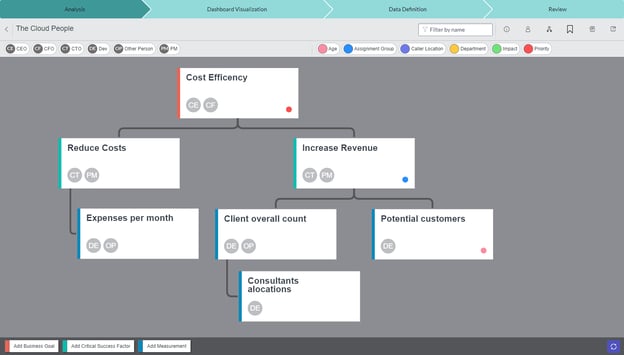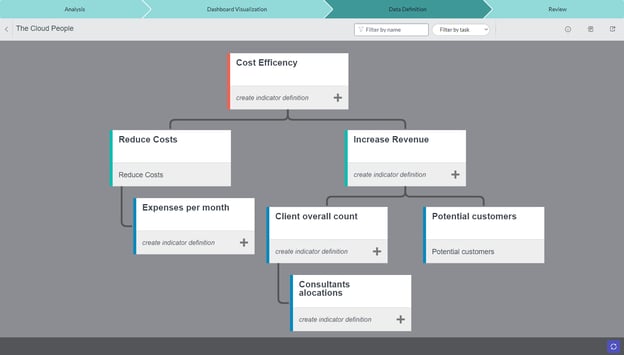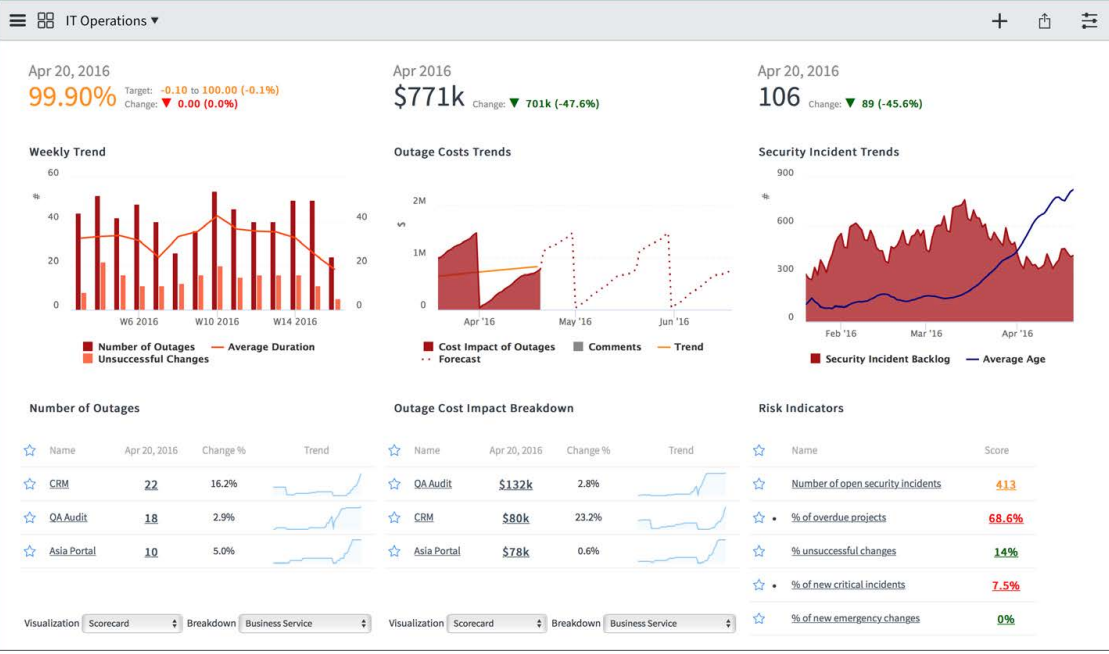ITOM Governance
In this blog post, we'll discuss ITOM Governance functionality and its elements in ServiceNow. ITOM Governance refers to the processes and policies...
Wawrzyniec Poreda • 3 min read • Aug 9, 2023

The purpose of this article is to breakdown and simplify use and concepts behind the KPI composer tool that is complementary to the whole Performance Analytics module. My main goal is to describe the overall ‘high-level’ concept of said suite rather than describing every button so I will purposely omit lesser components for the sake of clarity.
KPI Composer, as a supplement to the Performance Analytics module, serves as a high-level blueprint creator to enable seamless collaboration between stakeholders, project managers, solution consultants and last but not least developers. Allows users to handle conceptual work before actual development and provides a robust and coherent environment for decision making along the way of creating purposeful reporting. This article will break the Composer down to 4 sections as it is divided by design and go through the most important concepts for each of them.
![]()
Important note: Composer, by design, divides work on the highest level by the projects so different departments can work independently of each other.

The first KPI Composer implementation phase is Analysis. During the Analysis phase, you build a KPI Tree composed of artifacts in a hierarchical arrangement. Artifacts are divided into 3 types, namely:
To reinforce the readability and usability of KPI Tree there are Personas and Group by Attributes that can be added to any artifact on the tree.
Can be assigned to any of the objects as an indication of acountability for the given artifact. Persona can act as a filter in the dashboard view of the KPI tree in order to clarify one’s tasks.
Can be defined as custom labels for artifacts on the tree to separate designated types of activities.

This stage, as the name implies, allows the team to visualize the layout and report types that are to be utilized within the dashboards. Before we delegate developers to defining specific data monitoring and solution, this part provides rough representation of what the final product of implementation will look like allowing all parties involved to discuss specific layouts and data representation types in order to acquire optimal solution afterwards.

This stage is used to identify specific Performance Analytics Indicators either by providing technical specifications or linking already existing Indicators. Indicator definition can consist of a sole description that is to be used for future reference as a guide for automated measurement. Existing measurements can also be linked with both Performance Analytics and Standard ServiceNow Reports at one’s disposal. This step is mostly utilized as a measure of cooperation between Solution Consultants and Technical Consultants as a means to pinpoint specific data to be presented. To prevent clutter, personas and group by functions are not accessible on the KPI Tree view in this step.

Final part of KPI Composer is the Review that summarizes all actions taken beforehand and provides the user with a clear dashboard to finalize the project or, in case of inaccuracies, revisit problematic or overlooked areas. This step allows the user to validate the project to streamline and automate error-checking. Another action that is automated is creation of tasks that simplify work delegation based on responsibilities set in previous parts of the Composer. Every statistic listed on Review is clickable and provides a list view of corresponding records.
As I hopefully managed to establish in this article, KPI Composer is a versatile tool created as a powerful cooperation tool that enables and simplifies work for all involved parties including but not limited to Stakeholders, Project Managers, Solution Consultants and Developers. If deployed correctly and with common benefit in mind, it can significantly expedite the process of utilizing the Performance Analytics module. Alongside back-end benefits, it can serve as a PA simplification applicable in the Sales department or presented to management part of the projects.
This article is a brief overview of the whole module and therefore I strongly recommend you to visit below link as a way to expand your knowledge on the topic:
https://nowlearning.servicenow.com/lxp?id=learning_course_prev&course_id=63a2795cdb4aa41413049a82ca9619b5
Also I highly recommend just trying the module for yourself as it is free to try on Personal Development Instance.

In this blog post, we'll discuss ITOM Governance functionality and its elements in ServiceNow. ITOM Governance refers to the processes and policies...

Setting up SMS communication within the client environment where SMS notifications are necessary to use, seems to be a straightforward process to...

We are currently living in a very interesting age, some would even name it “The AI age”. We are all already aware of the success that OpenAI’s Chat...